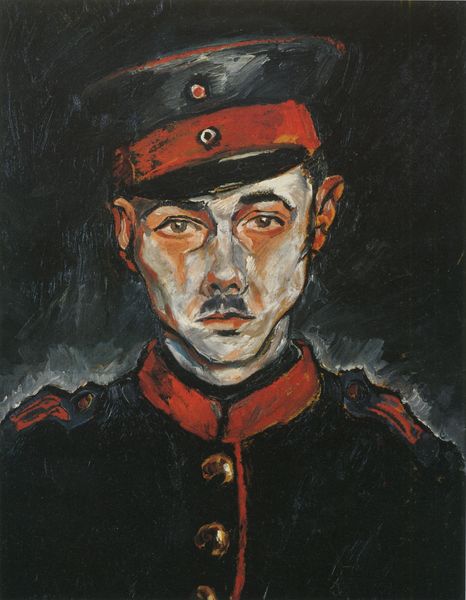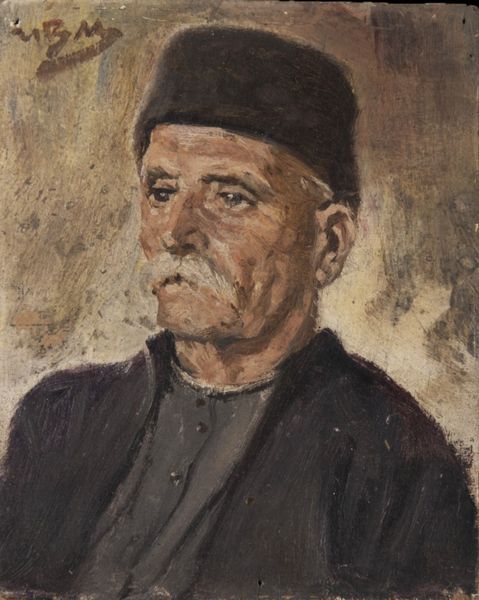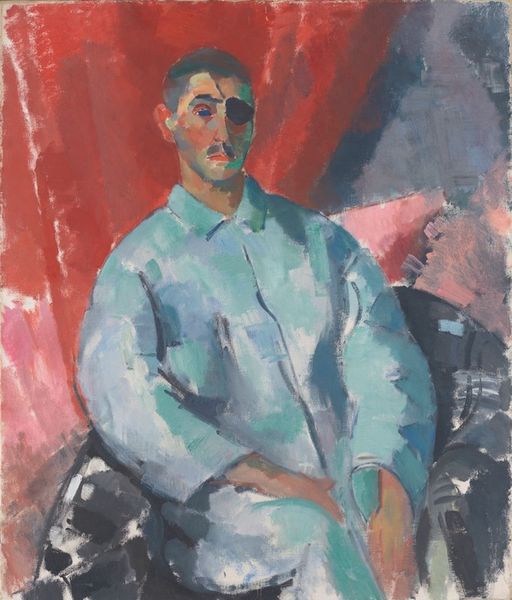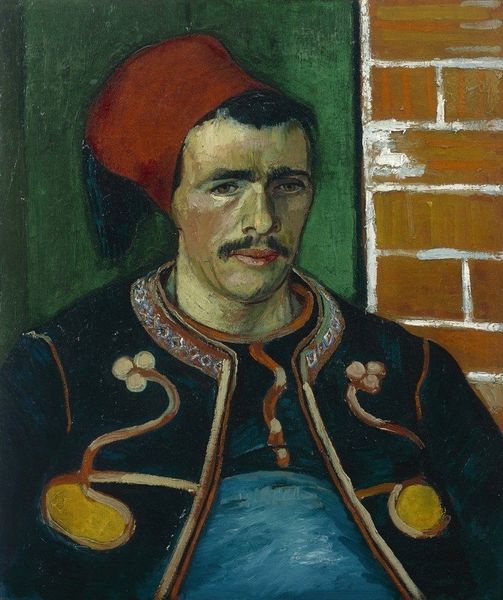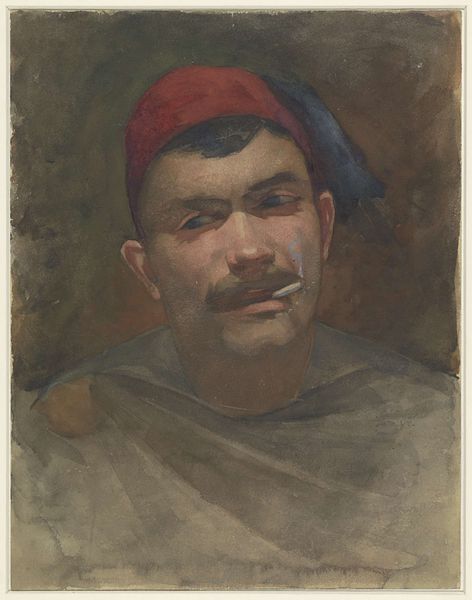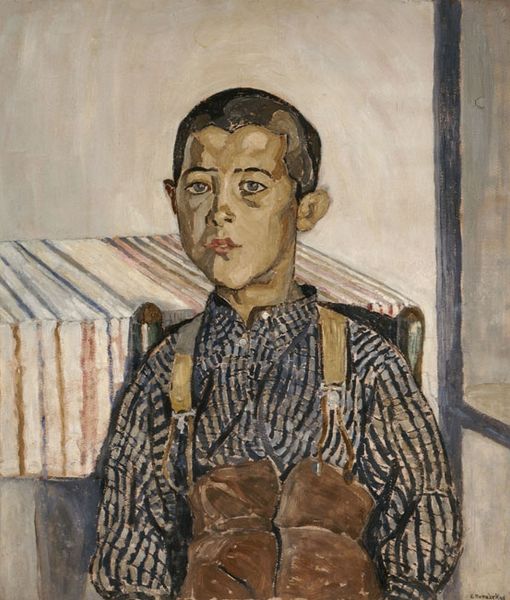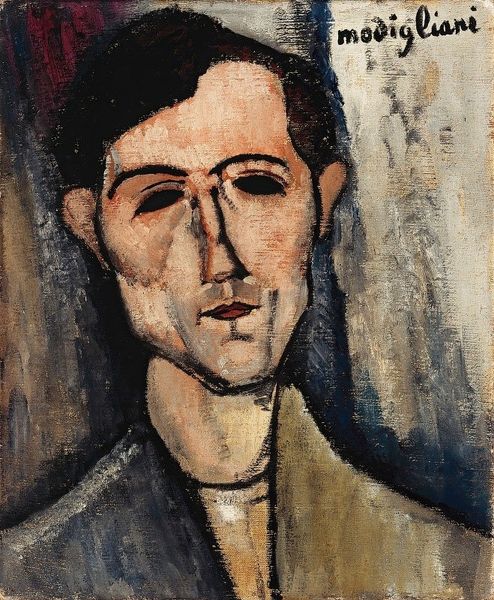
oil-paint
#
portrait
#
oil-paint
#
soviet-nonconformist-art
#
figuration
#
oil painting
#
portrait drawing
#
facial portrait
#
portrait art
#
fine art portrait
#
realism
Dimensions: 50 x 36 cm
Copyright: Mariam Aslamazian,Fair Use
Curator: Immediately, I'm struck by the weight in his gaze, the almost burdened look he carries. It's an intimate portrait, despite his... official capacity, I suppose. Editor: Indeed. Here we have Mariam Aslamazian's 1935 oil-on-canvas, "The Portrait of Switchman." Considering Aslamazian's work and the social-realist art movement, it's a depiction of working-class Soviet life—an idealized portrait, perhaps, intended for the public good? Curator: Idealized, but look at his eyes. There's a deep fatigue there, almost resignation. Even with the red star on his cap—the obvious symbol of allegiance and the Soviet project—the overall impression is one of subdued emotion. He's present, yet...absent. Do you see how the slightly averted gaze shifts the emphasis? Editor: That red star definitely positions him politically. Remember the context; art during the Stalinist era functioned largely as propaganda. The intent, arguably, would have been to project strength, resolve... something beyond weariness. But to your point, it is compelling how he evades complete assimilation to the project. I wonder about Aslamazian’s approach here, the artistic liberties taken. Curator: It’s fascinating because Aslamazian gives us a glimpse of humanity—fallibility. Look at the texture of the brushstrokes; the impasto rendering creates almost a sculptural feel, giving him depth, almost a lived reality. This stands in stark contrast to the more flat depictions of Soviet life in Socialist Realism, often typified by smooth brushwork meant to communicate utopic simplicity. His facial structure alone has weight that feels symbolic beyond mere representation. Editor: It prompts a powerful question. Was this subversive in its quiet way? Were portrayals of genuine, palpable human emotion accepted in officially sanctioned artwork, or would pieces like these be subtly questioning the utopian facade that the political leaders sought to project? The fact that this painting exists gives it a significance outside purely artistic interpretation. Curator: Exactly. We project onto these artworks our interpretations and biases informed by what symbols mean to us now. We look to it for our modern human understanding of representation that asks us what we see beyond face value. It brings history, our psychology, and their psychology together across a time gap. Editor: Ultimately, isn’t that the enduring appeal and value of art? Its ability to simultaneously be of its time and to speak across them, stirring responses unique to each viewer? This has given me a lot to ponder on the role of this museum in that exchange.
Comments
No comments
Be the first to comment and join the conversation on the ultimate creative platform.
